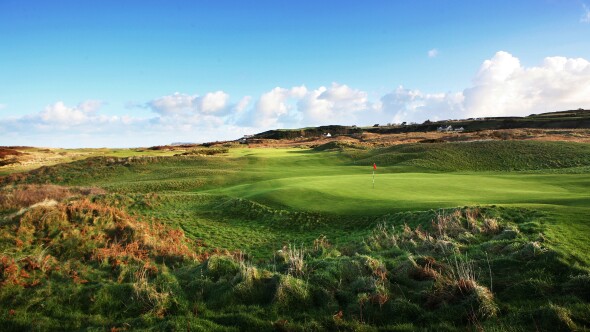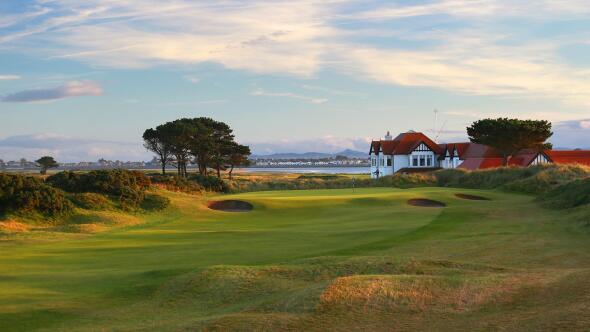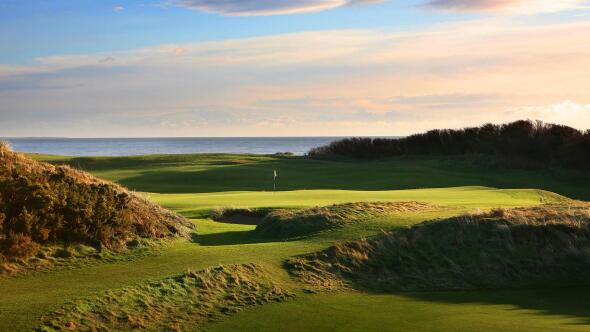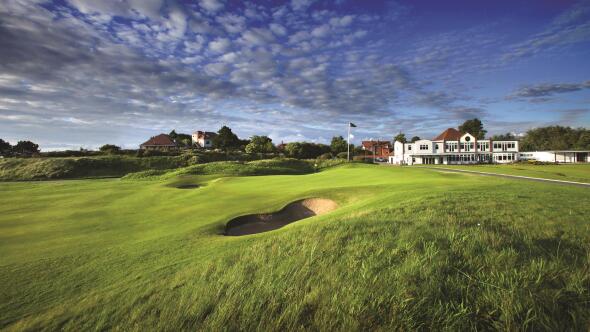The European Club

About
| Tee | Par | Length | Rating | Slope |
|---|---|---|---|---|
| Blue | 71 | 7490 yards | ||
| White | 71 | 6795 yards | ||
| Yellow | 71 | 6194 yards | ||
| Red (W) | 71 | 5434 yards |
| Hole | 1 | 2 | 3 | 4 | 5 | 6 | 7 | 8 | 9 | Out | 10 | 11 | 12 | 13 | 14 | 15 | 16 | 17 | 18 | In | Total |
|---|---|---|---|---|---|---|---|---|---|---|---|---|---|---|---|---|---|---|---|---|---|
| Blue M: 75.9/135 | 424 | 160 | 499 | 470 | 444 | 210 | 470 | 415 | 427 | 3519 | 466 | 416 | 459 | 596 | 195 | 415 | 415 | 432 | 477 | 3871 | 7390 |
| White M: 72.9/132 | 363 | 148 | 481 | 426 | 398 | 177 | 449 | 402 | 402 | 3246 | 397 | 379 | 438 | 503 | 165 | 379 | 399 | 389 | 425 | 3474 | 6720 |
| Yellow M: 70.2/130 | 354 | 135 | 452 | 399 | 369 | 149 | 374 | 377 | 386 | 2995 | 354 | 360 | 413 | 486 | 130 | 346 | 368 | 355 | 400 | 3212 | 6207 |
| Red W: 72.9/128 | 301 | 120 | 424 | 349 | 299 | 136 | 339 | 361 | 344 | 2673 | 344 | 292 | 348 | 413 | 122 | 340 | 348 | 339 | 350 | 2896 | 5569 |
| Handicap | 8 | 18 | 16 | 4 | 6 | 14 | 2 | 10 | 12 | 1 | 9 | 5 | 15 | 17 | 13 | 11 | 3 | 7 | |||
| Par | 4 | 3 | 5 | 4 | 4 | 3 | 4 | 4 | 4 | 35 | 4 | 4 | 4 | 5 | 3 | 4 | 4 | 4 | 4 | 36 | 71 |
Course Details
Rentals/Services
Practice/Instruction
Policies
Food & Beverage
CateringAvailable Facilities
ClubhouseReviews
Spielberg used the Beaches on the back nine to film Saving Private Ryan
I Played here with my two sons Matthew and Mark in 2011. There are twenty holes. This a very challenging links course in County Wicklow. The par 4s feel like par5s. They could play any championship here. Extremely beautiful and not that far from Dublin.
We stayed at Powers Court when it was a Ritz Carlton.
One of the best in 🇮🇪 Ireland.
Photo to follow
Kerry Mucci
Overrated
After a week in Ireland, my foursome stopped at The European Club to finish our week of Irish golf. We all walked off the course disappointed. We were expecting a world class course experience like we had at Old Head, Ballybunion, Tralee, Waterville and Lahinch, but were disappointed from the moment we stepped into the clubhouse. We knew that there was no caddies, but we had no idea that we had to request electric golf carts ahead of time. We then were amazed at how the club nickeled and dimes it’s guests. A pull cart you pay extra, range balls, you pay extra, course guides, you pay extra. Pace of play was slow even four a foursome pulling our own clubs. Holes were nothing special compared to the other courses we played. To sum it all up, overrated and over priced.
Great Irish Beachside Track
This course is similar to Barnbougle Dunes (Tasmania, Australia) in the way it plays along the coast on several holes but the size of the dunes and the routing make it better in my opinion.
It's unusual in that there are only two par 5's and three par 3's which has really been dictated by the topography. There are in fact twenty holes here (7a & 12a) which are also both par 3's and everyone always plays them as well.
It is a reasonably lengthy course with a lot of holes up higher in the dunes which brings the wind into play. Today it was mid strength without being brutal. It is also a course where strategy will win over power every day of the week. The fairways always offer you width but, usually, the longer you hit it the more the fairways narrow. So, the big hitter is left with a choice of risking a tight area or throttling back and playing a slightly longer shot in.
I could bang on about virtually every hole as the WOW factor is definitely here but that would take too long. Seven and eight are outstanding par 4's with the seventh being long and surrounded by trouble both sides the full length of the hole and the eighth doesn't have a single bunker on it but par is gold.
12-14 hug the beach on the right and run south to north and provide some magnificent vistas as well as super golf holes. 16 & 17 normally play back into the wind and then 18 is a beaut finishing hole.
The golfing world owes a debt of gratitude to Mr Pat Ruddy for designing and building this gem and is a better place for it.
Incredible experience
This is one of the finest courses in Ireland. The course is in perfect condition.





























I think your comments are very unfair. This is a great example of links golf. I've played all the above courses and would agree the terrain is not as dramatic as old head but it's a bargain compared to it. Golf carts? Are your legs broken?Most every course in Ireland golf carts aren't a regular thing. Big tourists destinations in recent years now stock golf carts to cater to Americans. Any course will charge you extra for any of the items mentioned. You sound like an idiot European club doesn't have any weak holes and is immaculate
I completely agree with this review. Just an overrated and overpriced golf course. Wish I'd played Old Head twice.